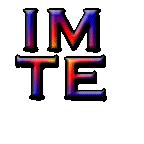Elementary Mathematics Content II focuses on measurement and geometry with emphasis
on conjecture, justification and proof.
Standard 7: Measurement
|
|
7A1.
|
Knows how to measure length, area, volume, capacity, time, temperature, angles,
weight and mass.
|
|
7B1.
|
Uses customary, metric, and non-standard measures.
|
|
7B2.
|
Selects and uses appropriate tools to perform above measurements.
|
|
7A2.
|
Has knowledge of non-standard and emerging units such as graphic screen pixels and
font size.
|
|
7A4.
|
Understands how changing one measure of a multi-dimensional object may affect other
measures.
|
|
7C5.
|
Explains how changing one measure of a multi-dimensional object impacts other measurements.
|
|
7A5.
|
Understands conversion factors as they apply to dimensional analysis.
|
|
7B3.
|
Estimates measurement.
|
|
7B4.
|
Determines acceptable measures of accuracy and calculates relative error.
|
|
7C1.
|
Measures objects using both direct and indirect measurement.
|
|
7C2.
|
Uses formulas to aid in indirect measurement.
|
|
7C3.
|
Applies measurements and formulas to irregular shapes, regions, and solids.
|
|
7C4.
|
Reads and interprets scale drawings.
|
|
7C6.
|
Reads and interprets topographical maps and architectural drawings.
|
Standard 8: Algebra
|
|
8C2.
|
Understands concepts of distance, area, volume, and shapes that lead to limits.
|
Standard 9: Geometry
|
|
9A.
|
Understands terminology, properties of two- and three-dimensional shapes, and the
relationships among them.
|
|
9E1.
|
Translates between two- and three-dimensional representations of the same figure including
the use of coordinate geometry and graph theory.
|
|
9C1.
|
Understands inductive and deductive reasoning.
|
|
9F2.
|
Constructs inductive, deductive, and indirect arguments and explains the difference
among them.
|
|
9F1.
|
|
Makes and identifies mathematical conjectures and provides justification to support or
refute conjectures using
|
|
(a)
|
manipulatives
|
|
(b)
|
constructions
|
|
(c)
|
algebraic, coordinate, and transformational methods
|
|
(d)
|
interactive technology
|
|
(e)
|
paragraph and two-column proofs
|
|
|
9C2.
|
Understands the appropriate uses of different types of proof.
|
|
9D1.
|
Recognizes relationships and patterns in geometric figures.
|
|
9D2.
|
Uses characteristics of geometric figures including symmetry, congruence, and similarity
to recognize, identify, build, draw, describe, analyze, and categorize two- and three-dimensional
figures and tessellation.
|
|
9D3.
|
Applies geometric concepts to solve practical applications.
|
|
9E2.
|
Uses manipulative, Euclidean geometry, coordinate geometry, transformational geometry,
and appropriate technology to model mathematical concepts and solve problems.
|
|
9D4.
|
Explains the relationships between perimeter, area, and volume of similar figures.
|
|
9E3.
|
|
Generates solids of revolution from two-dimensional figures.
|
|
(a)
|
manipulatives
|
|
(b)
|
constructions
|
|
(c)
|
interactive technology
|
|
(d)
|
paragraph and two-column proofs.
|
|





 Go Back to page
-1-
-2-
-3-
Go Back to page
-1-
-2-
-3-

 Go Back to page
-1-
-2-
-3-
Go Back to page
-1-
-2-
-3-

 Back to Top
Back to Top